Essential Material Knowledge and Recent Model Developments for REBCO-Coated Conductors in Electric Power Systems
Abstract
1. Introduction
2. REBCO Material
3. Modeling Based on Lumped Parameters
3.1. Extension of Power-Law Model
3.2. Dependency Function
3.3. Dependency Function
3.4. Distribution of Current: Current-Sharing Regime
3.5. Power Dissipation
3.6. Thermal Model
3.7. Examples of Model Usage in AC and DC Applications
3.7.1. Conceptual Design of the Superconducting Component (SCC)
3.7.2. Resistive Superconducting Fault-Current Limiter (r-SFCL)
3.7.3. Superconducting Power Filter (ScPF) for Embedded DC Grids
4. Modeling Based on Finite Element Method
4.1. T-A Formulation
4.2. Coupling FEM and External Electrical Circuit
4.3. Examples of the Use of the Coupling Method
4.3.1. 2D FEM-Circuit Coupling
4.3.2. 3D FEM-Circuit Coupling
5. Discussion
6. Conclusions
Author Contributions
Funding
Institutional Review Board Statement
Informed Consent Statement
Data Availability Statement
Acknowledgments
Conflicts of Interest
Abbreviations
| 2G | Second generation |
| AC | Alternating Current |
| BSCCO | Bismuth strontium calcium copper oxide |
| CC | Cooling curve |
| CVP | Current vector potential |
| DC | Direct Current |
| FEA | Finite Element Analysis |
| FEM | Finite Element Method |
| HS | High side |
| HTS | High temperature superconductor |
| LN2 | Liquid nitrogen |
| LS | Low side |
| MVP | Magnetic vector potential |
| REBCO | Rare-earth barium copper oxide |
| RMS | Root Mean Square |
| r-SFCL | Ressitive Superconducting Fault-Current Limiter |
| SC | Superconductor |
| SCC | Superconducting Component |
| ScPF | Superconducting Power Filter |
References
- dos Santos, G.; Bitencourt, A.; Queiroz, A.T.; Martins, F.G.R.; Sass, F.; Dias, D.H.N.; Sotelo, G.G.; Polasek, A. Tests and recovery under load simulations of a novel bifilar resistive SFCL having undulated shape configuration. Supercond. Sci. Technol. 2021, 34, 045009. [Google Scholar] [CrossRef]
- Sotelo, G.G.; dos Santos, G.; Martins, F.G.R.; Sass, F.; Rocha, M.M.; Bitencourt, A.A.; França, B.W.; Dias, D.H.N.; de Andrade, R., Jr.; Polasek, A. A Novel Configuration for Resistive SFCL with bifilar 2G tapes. J. Phys. Conf. Ser. 2020, 1559, 1–5. [Google Scholar] [CrossRef]
- Morandi, A. Fault Current Limiter: An Enabler for Increasing Safety and Power Quality of Distribution Networks. IEEE Trans. Appl. Supercond. 2013, 23, 57–64. [Google Scholar] [CrossRef]
- Morandi, A.; Imparato, S. A DC-operating resistive-type superconducting fault current limiter for AC applications. Supercond. Sci. Technol. 2009, 22, 045002. [Google Scholar] [CrossRef]
- Pellecchia, A.; Klaus, D.; Masullo, G.; Marabotto, R.; Morandi, A.; Fabbri, M.; Goodhand, C.; Helm, J. Development of a Saturated Core Fault Current Limiter with Open Magnetic Cores and Magnesium Diboride Saturating Coils. IEEE Trans. Appl. Supercond. 2017, 27, 1–7. [Google Scholar] [CrossRef]
- dos Santos, G.; Sass, F.; Sotelo, G.G.; Fajoni, F.; Baldan, C.; Filho, E.R. Multi-objective optimization for the superconducting bias coil of a Saturated Iron Core Fault Current Limiter using the T-A formulation. Supercond. Sci. Technol. 2020, 34, 025012. [Google Scholar] [CrossRef]
- de Sousa, W.T.B.; Shabagin, E.; Kottonau, D.; Noe, M. An open-source 2D finite difference based transient electro-thermal simulation model for three-phase concentric superconducting power cables. Supercond. Sci. Technol. 2020, 34, 015014. [Google Scholar] [CrossRef]
- Kottonau, D.; de Sousa, W.T.B.; Bock, J.; Noe, M. Design Comparisons of Concentric Three-Phase HTS Cables. IEEE Trans. Appl. Supercond. 2019, 29, 1–8. [Google Scholar] [CrossRef]
- Santos, B.M.O.; Dias, F.J.M.; Sass, F.; Sotelo, G.G.; Polasek, A.; de Andrade, R. Simulation of Superconducting Machine with Stacks of Coated Conductors Using Hybrid A-H Formulation. IEEE Trans. Appl. Supercond. 2020, 30, 1–9. [Google Scholar] [CrossRef]
- Dias, F.J.M.; Santos, B.M.O.; Sotelo, G.G.; Polasek, A.; de Andrade, R. Development of a Superconducting Machine with Stacks of Second Generation HTS Tapes. IEEE Trans. Appl. Supercond. 2019, 29, 1–5. [Google Scholar] [CrossRef]
- Obradors, X.; Puig, T. Coated conductors for power applications: Materials challenges. Supercond. Sci. Technol. 2014, 27, 044003. [Google Scholar] [CrossRef]
- Ahn, M.C.; Jang, J.Y.; Ko, T.K.; Lee, H. Novel Design of the Structure of a Non-Inductive Superconducting Coil. IEEE Trans. Appl. Supercond. 2011, 21, 1250–1253. [Google Scholar] [CrossRef]
- Alam, M.S.; Abido, M.A.Y.; El-Amin, I. Fault Current Limiters in Power Systems: A Comprehensive Review. Energies 2018, 11, 1025. [Google Scholar] [CrossRef]
- Lee, J.; Park, M.; Yu, I.-K. A Study on the Modeling of Superconducting Fault Current Limiters Using EMTDC. In Proceedings of the 5th IFAC Symposium on Power Plants and Power Systems Control 2003, IFAC Proceedings Volumes, Seoul, Korea, 15–19 September 2003; Volume 36, pp. 899–904. [Google Scholar]
- Sung, B.C.; Park, D.K.; Park, J.; Ko, T.K. Study on a Series Resistive SFCL to Improve Power System Transient Stability: Modeling, Simulation, and Experimental Verification. IEEE Trans. Ind. Electron. 2009, 56, 2412–2419. [Google Scholar] [CrossRef]
- Nemdili, S.; Belkhiat, S. Modeling and Simulation of Resistive Superconducting Fault-Current Limiters. SpringerPlus 2012, 25, 2351–2356. [Google Scholar] [CrossRef]
- Sirois, F.; Grilli, F.; Morandi, A. Comparison of Constitutive Laws for Modeling High-Temperature Superconductors. IEEE Trans. Appl. Supercond. 2019, 29, 1–10. [Google Scholar] [CrossRef]
- Perez-Chavez, J.J.; Trillaud, F.; Castro, L.M.; Queval, L.; Polasek, A.; Junior, R.D.A. Generic model of Three-phase (Re)BCO Resistive Superconducting Fault Current Limiters for Transient Analysis of Power Systems. IEEE Trans. Appl. Supercond. 2019, 9, 5601811. [Google Scholar] [CrossRef]
- Zhang, X.; Ruiz, H.S.; Geng, J.; Shen, B.; Fu, L.; Zhang, H.; Coombs, T.A. Power flow analysis and optimal locations of resistive type superconducting fault current limiters. SpringerPlus 2016, 5, 1–20. [Google Scholar] [CrossRef]
- Quéval, L.; Zermeño, V.M.R.; Grilli, F. Numerical models for ac loss calculation in large-scale applications of HTS coated conductors. Supercond. Sci. Technol. 2016, 29, 024007. [Google Scholar] [CrossRef]
- Grilli, F. Numerical Modeling of HTS Applications. IEEE Trans. Appl. Supercond. 2016, 26, 1–8. [Google Scholar] [CrossRef]
- Jin, J.-M. The Finite Element Method in Electromagnetics; Wiley-IEEE: New York, NY, USA, 2014; p. 876. [Google Scholar]
- dos Santos, G.; dos Reis Martins, F.G.; Sass, F.; Dias, D.H.N.; Sotelo, G.G.; Morandi, A. A coupling method of the Superconducting Devices modeled by Finite Element Method with the Lumped Parameters electrical circuit. Supercond. Sci. Technol. 2021, 34, 045014. [Google Scholar] [CrossRef]
- Trillaud, F.; Queval, L.; Douine, B. Superconducting power filter for aircraft electric DC grids. IEEE Trans. Appl. Supercond. 2021, 31, 3700405. [Google Scholar] [CrossRef]
- Superpower Inc. 2G HTS Wire. Available online: http://www.superpower-inc.com/content/2g-hts-wire (accessed on 2 April 2021).
- SUNAM Co. Ltd. GdBCO. Available online: http://www.i-sunam.com/wp/sunam1-2/ (accessed on 2 April 2021).
- SuperOx. HTS Wire. Available online: https://eng.s-innovations.ru (accessed on 2 April 2021).
- American Superconductor (AMSC). Amperium® HTS Wire. Available online: https://www.amsc.com/gridtec/amperium-hts-wire/ (accessed on 2 April 2021).
- Oh, S.; Choi, H.; Lee, C.; Lee, S.; Yoo, J.; Youm, D.; Yamada, H. Relation between the critical current and the n value of ReBCO thin films: A scaling law for flux pinning of ReBCO thin films. J. Appl. Phys. 2007, 102, 043904. [Google Scholar] [CrossRef]
- Rossi, L.; Hu, X.; Kametani, F.; Abraimov, D.; Polyanskii, A.; Jaroszynski, J.; Larbalestier, D.C. Sample and length-dependent variability of 77 and 4.2 K properties in nominally identical RE123 coated conductors. Supercond. Sci. Technol. 2016, 29, 054006. [Google Scholar] [CrossRef]
- Chudy, M.; Zhong, Z.; Eisterer, M.; Coombs, T. n-Values of commercial YBCO tapes before and after irradiation by fast neutrons. Supercond. Sci. Technol. 2015, 28, 035008. [Google Scholar] [CrossRef]
- Tsuchiya, K.; Kikuchi, A.; Terashima, A.; Norimoto, K.; Uchida, M.; Tawada, M.; Masuzawa, M.; Ohuchi, N.; Wang, X.; Takao, T.; et al. Critical current measurement of commercial REBCO conductors at 4.2 K. Cryogenics 2017, 85, 1–7. [Google Scholar] [CrossRef]
- Sirois, F.; Grilli, F. Potential and limits of numerical modelling for supporting the development of HTS devices. Supercond. Sci. Technol. 2015, 28, 043002. [Google Scholar] [CrossRef]
- Zhang, H.; Yao, M.; Kails, K.; Machura, P.; Mueller, M.; Jiang, Z.; Xin, Y.; Li, Q. Modelling of electromagnetic loss in HTS coated conductors over a wide frequency band. Supercond. Sci. Technol. 2020, 33, 025004. [Google Scholar] [CrossRef]
- Berrospe-Juarez, E.; Trillaud, F.; Zermeño, V.M.R.; Grilli, F. Advanced electromagnetic modeling of large-scale high-temperature superconductor systems based on H and T-A formulations. Supercond. Sci. Technol. 2021, 34, 044002. [Google Scholar] [CrossRef]
- Senatore, C.; Barth, C.; Bonura, M.; Kulich, M.; Mondonico, G. Field and temperature scaling of the critical current density in commercial REBCO coated conductors. Supercond. Sci. Technol. 2015, 29, 014002. [Google Scholar] [CrossRef]
- Pérez-Chávez, J.J. Diseño y Simulación de un Limitador de Corriente de Falla Basado en Superconductores. Ph.D. Thesis, Program de Maestría y Doctorado en Ingeniería Eléctrica, Universidad Nacional Autónoma de México, Mexico City, Mexico, 2019. [Google Scholar]
- De Sousa, W.T.B.; Polasek, A.; Dias, R.; Matt, C.F.T.; de Andrade, R., Jr. Thermal—Electrical analogy for simulations of superconducting fault current limiters. Cryogenics 2014, 62, 97–109. [Google Scholar] [CrossRef]
- Baez-Muñoz, A.; Trillaud, F.; Castro, L.M.; Rodriguez-Rodriguez, J.R.; Escarela-Perez, R. Thermoelectromagnetic lumped-parameter model of High Temperature Superconductor generators for transient stability analysis. IEEE Trans. Appl. Supercond. 2021. in publication. [Google Scholar]
- Chen, B.; Halperin, W.; Guptasarma, P.; Hinks, D.G.; Mitrović, V.F.; Reyes, A.P.; Kuhns, P.L. Two-dimensional vortices in superconductors. Nat. Phys. 2007, 3, 239–242. [Google Scholar] [CrossRef]
- Kwok, W.-K.; Welp, U.; Glatz, A.; Koshelev, A.E.; Kihlstrom, K.J.; Crabtree, G.W. Vortices in high-performance high-temperature superconductors. Rep. Prog. Phys. 2016, 79, 116501. [Google Scholar] [CrossRef] [PubMed]
- Wu, C.; Wang, Y. YBa2Cu3O7−x, LaAlO-3, YBa2Cu3O7−x with Superconducting Properties Prepared via Sol-Gel Method. Coatings 2020, 10, 11. [Google Scholar] [CrossRef]
- Jung, J.; Yan, H.; Darhmaoui, H.; Abdelhadi, M.; Boyce, B.; Lemberger, T. Universal relationship between critical currents and nanoscopic phase separation in high-Tc thin films. Supercond. Sci. Technol. 1999, 12, 1086–1089. [Google Scholar] [CrossRef]
- Bonnard, C.-H.; Sirois, F.; Lacroix, C.; Didier, G. Multi-scale model of resistive-type superconducting fault current limiters based on 2G HTS coated conductors. Supercond. Sci. Technol. 2016, 30, 014005. [Google Scholar] [CrossRef]
- National Institute of Standard. Cryogenic Technology Resources. Available online: https://trc.nist.gov/cryogenics/ (accessed on 2 April 2021).
- Elschner, S.; Kudymow, A.; Fink, S.; Goldacker, W.; Grilli, F.; Schacherer, C.; Hobl, A.; Bock, J.; Noe, M. ENSYSTROB—Resistive fault current limiter based on coated conductors for medium voltage application. IEEE Trans. Appl. Supercond. 2011, 21, 1209–1212. [Google Scholar] [CrossRef]
- Elschner, S.; Kudymow, A.; Brand, J.; Fink, S.; Goldacker, W.; Grilli, F.; Noe, M.; Vojenciak, M.; Hobl, A.; Bludau, M.; et al. ENSYSTROB–Design, manufacturing and test of a 3-phase resistive fault current limiter based on coated conductors for medium voltage application. Phys. C Supercond. Its Appl. 2012, 482, 98–104. [Google Scholar] [CrossRef]
- Guillen, D.; Salas, C.; Trillaud, F.; Castro, L.M.; Queiroz, A.T.; Gonçalves Sotelo, G. Impact of Resistive Superconducting Fault Current Limiter and Distributed Generation on Fault Location in Distribution Networks. Electr. Power Syst. Res. 2020, 186, 106419. [Google Scholar] [CrossRef]
- Berger, A.D. Stability of Superconducting Cables with Twisted stacked YBCO Coated Conductors. Research Report Series. Master’s Thesis, Plasma Science and Fusion Center, Massachusetts Institute of Technology, Cambridge, MA, USA, 2012. [Google Scholar]
- Mäder, O. Diseño y Simulación de un Limitador de Corriente de Falla Basado en Superconductores. Ph.D. Thesis, Karlsruher Institut für Technologie Fakultät für Elektrotechnik und Informationstechnik, Karlsruhe, Germany, 2012. [Google Scholar]
- Jin, T.; Hong, J.; Zheng, H.; Tang, K.; Gan, Z. Measurement of boiling heat transfer coefficient in liquid nitrogen bath by inverse heat conduction method. J. Zhejiang Univ. Sci. A 2009, 10, 691–696. [Google Scholar] [CrossRef]
- Huang, G.; Douine, B.; Berger, K.; Didier, G.; Schwenker, I.; Lévêque, J. Increase of Stability Margin in Embedded DC Electric Grid with Superconducting Stabilizer. IEEE Trans. Appl. Supercond. 2016, 26, 5000304. [Google Scholar] [CrossRef]
- Quéval, L.; Trillaud, F.; Douine, B. DC grid stabilization using a resistive superconducting fault current limiter. In Proceedings of the International Conference on Components and Systems for DC Grids (COSYS-DC 2017), Grenoble, France, 14–15 March 2017; pp. 14–15. [Google Scholar]
- Shen, B.; Grilli, F.; Coombs, T. Overview of H-Formulation: A Versatile Tool for Modeling Electromagnetics in High-Temperature Superconductor Applications. IEEE Access 2020, 8, 100403–100414. [Google Scholar] [CrossRef]
- Wang, Y.; Zhang, M.; Grilli, F.; Zhu, Z.; Yuan, W. Study of the magnetization loss of CORC® cables using a 3D T-A formulation. Supercond. Sci. Technol. 2019, 32, 025003. [Google Scholar] [CrossRef]
- Sass, F.; Sotelo, G.G.; de Andrade Junior, R.; Sirois, F. H-formulation for simulating levitation forces acting on HTS bulks and stacks of 2G coated conductors. Supercond. Sci. Technol. 2015, 28, 125012. [Google Scholar] [CrossRef]
- Brambilla, R.; Grilli, F.; Martini, L. Development of an edge-element model for AC loss computation of high-temperature superconductors. Supercond. Sci. Technol. 2006, 20, 16–24. [Google Scholar] [CrossRef]
- Zhang, M.; Coombs, T.A. 3D modeling of high-Tcsuperconductors by finite element software. Supercond. Sci. Technol. 2011, 25, 015009. [Google Scholar] [CrossRef]
- Huang, X.; Huang, Z.; Xu, X.; Jin, Z.; Li, W. Effective 3-D FEM for large-scale high temperature superconducting racetrack coil. Prog. Supercond. Cryog. 2019, 21, 32–37. [Google Scholar]
- dos Santos, G.; dos Reis Martins, F.G.; Sass, F.; Sotelo, G.G.; Morandi, A.; Grilli, F. A methodology to 3D simulation of superconducting devices with ferromagnetic materials using the finite element method coupled to power electrical circuit. Supercond. Sci. Technol. 2021, 15, 17–25. [Google Scholar]
- Bianchetti, M.; de Bruyn, B.J.H.; Krop, D.C.J.; Lomonova, E.A. Simulation of AC losses in racetrack coils wound with striated HTS tapes. J. Phys. Conf. Ser. 2020, 1559, 012126. [Google Scholar] [CrossRef]
- Shen, B.; Grilli, F.; Coombs, T. Review of the AC loss computation for HTS using H formulation. Supercond. Sci. Technol. 2020, 33, 033002. [Google Scholar] [CrossRef]
- Grilli, F.; Pardo, E.; Morandi, A.; Gömöry, F.; Solovyov, M.; Zermeño, V.M.R.; Brambilla, R.; Benkel, T.; Riva, N. Electromagnetic Modeling of Superconductors with Commercial Software: Possibilities with Two Vector Potential-Based Formulations. IEEE Trans. Appl. Supercond. 2021, 31, 1–9. [Google Scholar] [CrossRef]
- Ainslie, M.; Grilli, F.; Quéval, L.; Pardo, E.; Perez-Mendez, F.; Mataira, R.; Morandi, A.; Ghabeli, A.; Bumby, C.; Brambilla, R. A new benchmark problem for electromagnetic modelling of superconductors: The high-T c superconducting dynamo. Supercond. Sci. Technol. 2020, 33, 105009. [Google Scholar] [CrossRef]
- Berrospe-Juarez, E.; Trillaud, F.; Zermeño, V.M.R.; Grilli, F. Screening Current-Induced Field and Field Drift Study in HTS coils using T-A homogenous model. J. Phys. Conf. Ser. 2020, 1559, 012128. [Google Scholar] [CrossRef]
- Zhang, H.; Zhang, M.; Yuan, W. An efficient 3D finite element method model based on the T-A formulation for superconducting coated conductors. Supercond. Sci. Technol. 2016, 30, 024005. [Google Scholar] [CrossRef]
- Liang, F.; Venuturumilli, S.; Zhang, H.; Zhang, M.; Kvitkovic, J.; Pamidi, S.; Wang, Y.; Yuan, W. A finite element model for simulating second generation high temperature superconducting coils/stacks with large number of turns. J. Appl. Phys. 2017, 122, 043903. [Google Scholar] [CrossRef]
- Canova, A.; Ottella, M.; Rodger, D. A coupled field-circuit approach to 3D FEM analysis of electromechanical devices. In Proceedings of the Ninth International Conference on Electrical Machines and Drives (Conf. Publ. No. 468), Canterbury, UK, 1–3 September 1999; pp. 71–75. [Google Scholar] [CrossRef]
- Santos, G.; Laurindo, B.M.; Fortes, M.Z.; França, B.W.; Martins, F.G. A model for calculating losses in transformer related to orders and harmonic amplitude under analysis of joule effect, eddy current and hysteresis. Int. J. Emerg. Electr. Power Syst. 2020, 21, 20200006. [Google Scholar] [CrossRef]
- Lange, E.; van der Giet, M.; Henrotte, F.; Hameyer, K. Circuit coupled simulation of a claw-pole alternator by a temporary linearization of the 3D-FE model. In Proceedings of the 2008 18th International Conference on Electrical Machines, Vilamoura, Portugal, 6–9 September 2008; pp. 1–6. [Google Scholar] [CrossRef]
- Benkel, T.; Lao, M.; Liu, Y.; Pardo, E.; Wolfstädter, S.; Reis, T.; Grilli, F. T–A Formulation to Model Electrical Machines with HTS Coated Conductor Coils. IEEE Trans. Appl. Supercond. 2020, 30, 1–7. [Google Scholar] [CrossRef]
- Brambilla, R.; Grilli, F.; Martini, L.; Bocchi, M.; Angeli, G. A Finite-Element Method Framework for Modeling Rotating Machines with Superconducting Windings. IEEE Trans. Appl. Supercond. 2018, 28, 1–11. [Google Scholar] [CrossRef]
- Wang, Y.; Bai, H.; Li, J.; Zhang, M.; Yuan, W. Electromagnetic modelling using TA formulation for high-temperature superconductor (RE) Ba2Cu3O × high field magnets. High Volt. 2020, 5, 218–226. [Google Scholar] [CrossRef]
- Sass, F.; Dias, D.H.N.; Sotelo, G.G.; de Andrade Junior, R. Superconducting magnetic bearings with bulks and 2G HTS stacks: Comparison between simulations using H and A-V formulations with measurements. Supercond. Sci. Technol. 2018, 31, 025006. [Google Scholar] [CrossRef]
- Rodriguez, E.; Santos, G.D.; Huang, Z.; Wang, W.; Deng, Z. Emulation and experimental analysis of an axial superconductor magnetic bearing. J. Phys. Conf. Ser. 2019, 1293, 012084. [Google Scholar] [CrossRef]
- Abrahamsen, A.B.; Magnusson, N.; Jensen, B.B.; Runde, M. Large Superconducting Wind Turbine Generators. Energy Procedia 2012, 24, 60–67. [Google Scholar] [CrossRef][Green Version]
- Markiewicz, W.D.; Larbalestier, D.C.; Weijers, H.W.; Voran, A.J.; Pickard, K.W.; Sheppard, W.R.; Jaroszynski, J.; Xu, A.; Walsh, R.P.; Lu, J.; et al. Design of a Superconducting 32 T Magnet With REBCO High Field Coils. IEEE Trans. Appl. Supercond. 2012, 22, 4300704. [Google Scholar] [CrossRef]
- Ciceron, J.; Badel, A.; Tixador, P. Superconducting magnetic energy storage and superconducting self-supplied electromagnetic launcher. Eur. Phys. J. Appl. Phys. 2017, 80, 20901. [Google Scholar] [CrossRef][Green Version]
- Gnilsen, J.; Usoskin, A.; Eisterer, M.; Betz, U.; Schlenga, K. Current–voltage characteristics of double disordered REBCO coated conductors exposed to magnetic fields with edge gradients. Supercond. Sci. Technol. 2019, 32, 104002. [Google Scholar] [CrossRef]
- Jin, J.X.; Dou, S.X.; Liu, H.K.; Hardono, T.; Cook, C.; Grantham, C. Critical current degradation caused by winding process of Bi-2223/Ag HTS wire in the form of a coil. IEEE Trans. Appl. Supercond. 1999, 9, 138–141. [Google Scholar] [CrossRef]
- Breschi, M.; Berrospe-Juarez, E.; Dolgosheev, P.; González-Parada, A.; Ribani, P.L.; Trillaud, F. Impact of Twisting on Critical Current and n-value of BSCCO and (Re)BCO Tapes for DC Power Cables. IEEE Trans. Appl. Supercond. 2017, 27, 1–4. [Google Scholar] [CrossRef]
- Victoria University of Wellington. High-Temperature Superconducting Wire Critical Current Database. Available online: http://htsdb.wimbush.eu/dataset/5309947 (accessed on 2 April 2021).
- International Electrotechnical Commission (IEC). TC 90 Superconductivity. Available online: https://www.iec.ch/ (accessed on 2 April 2021).

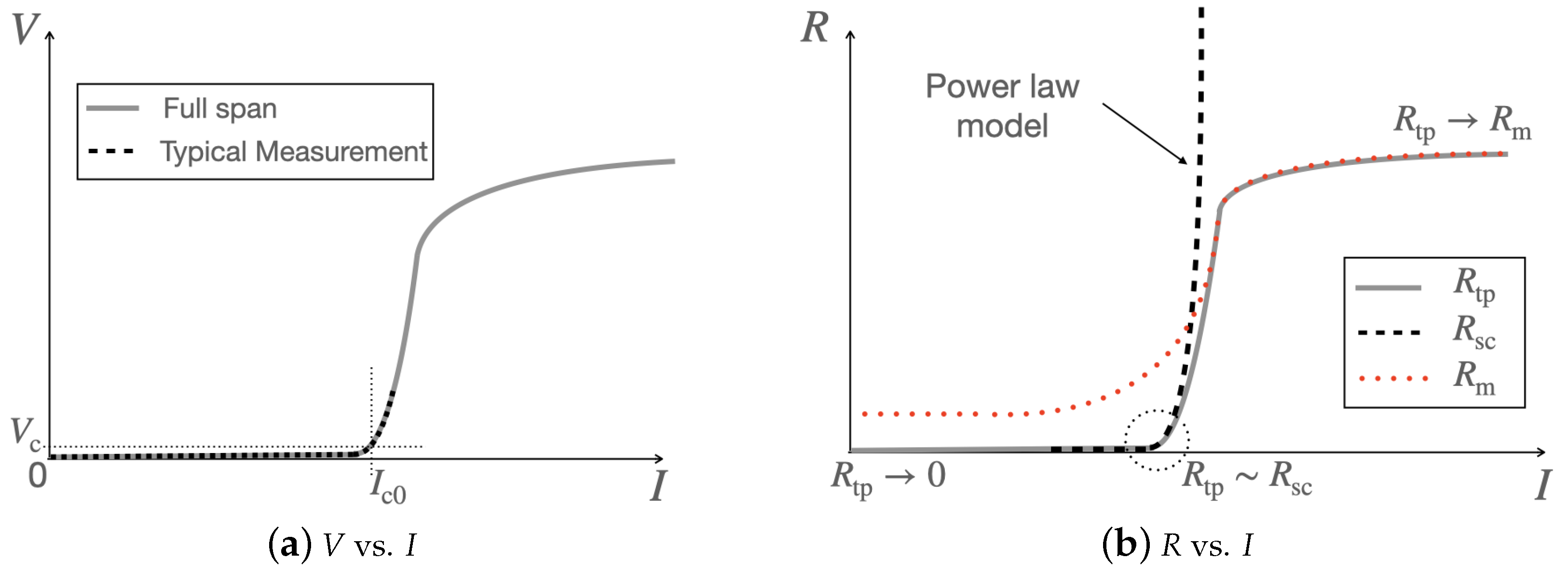
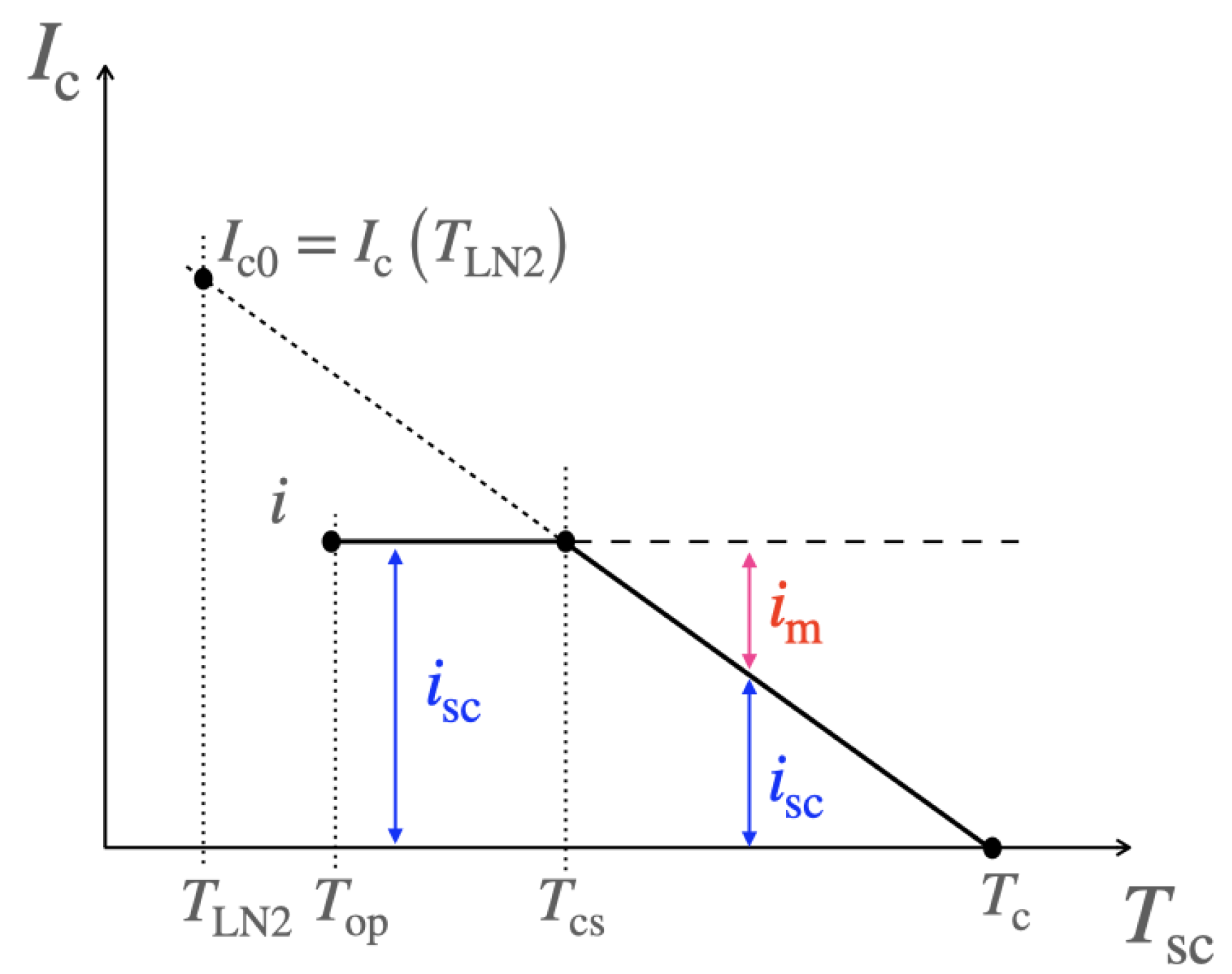
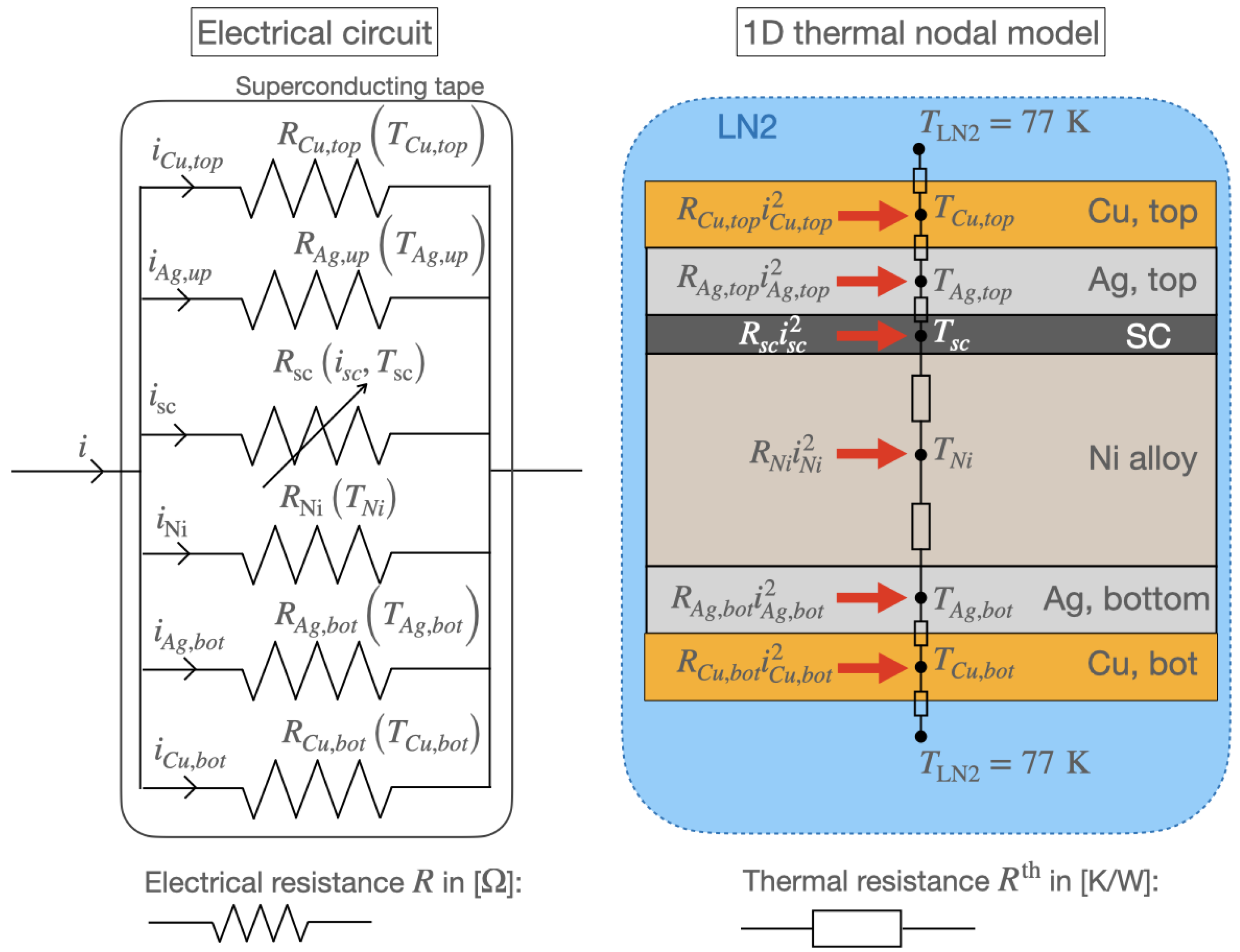



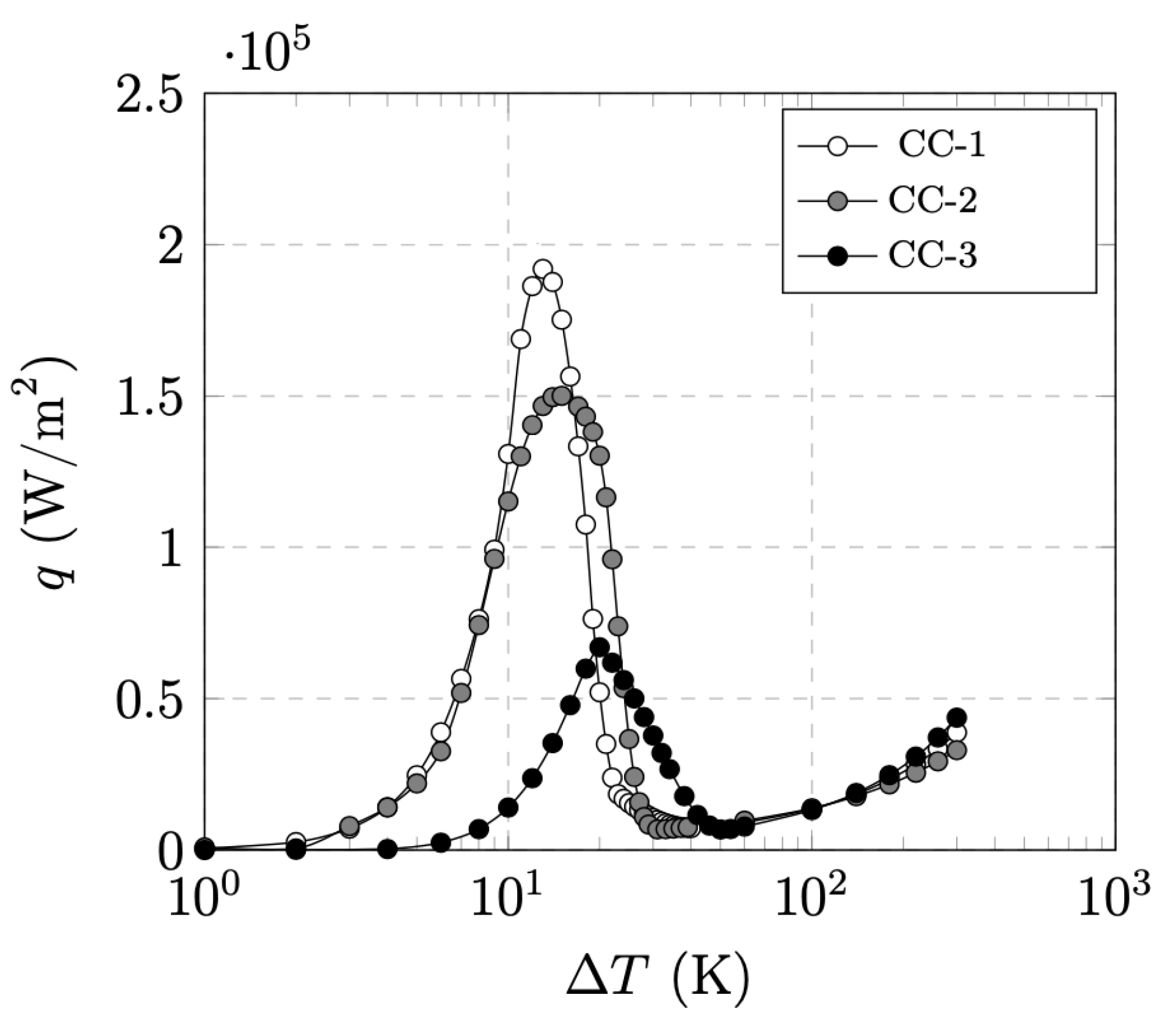
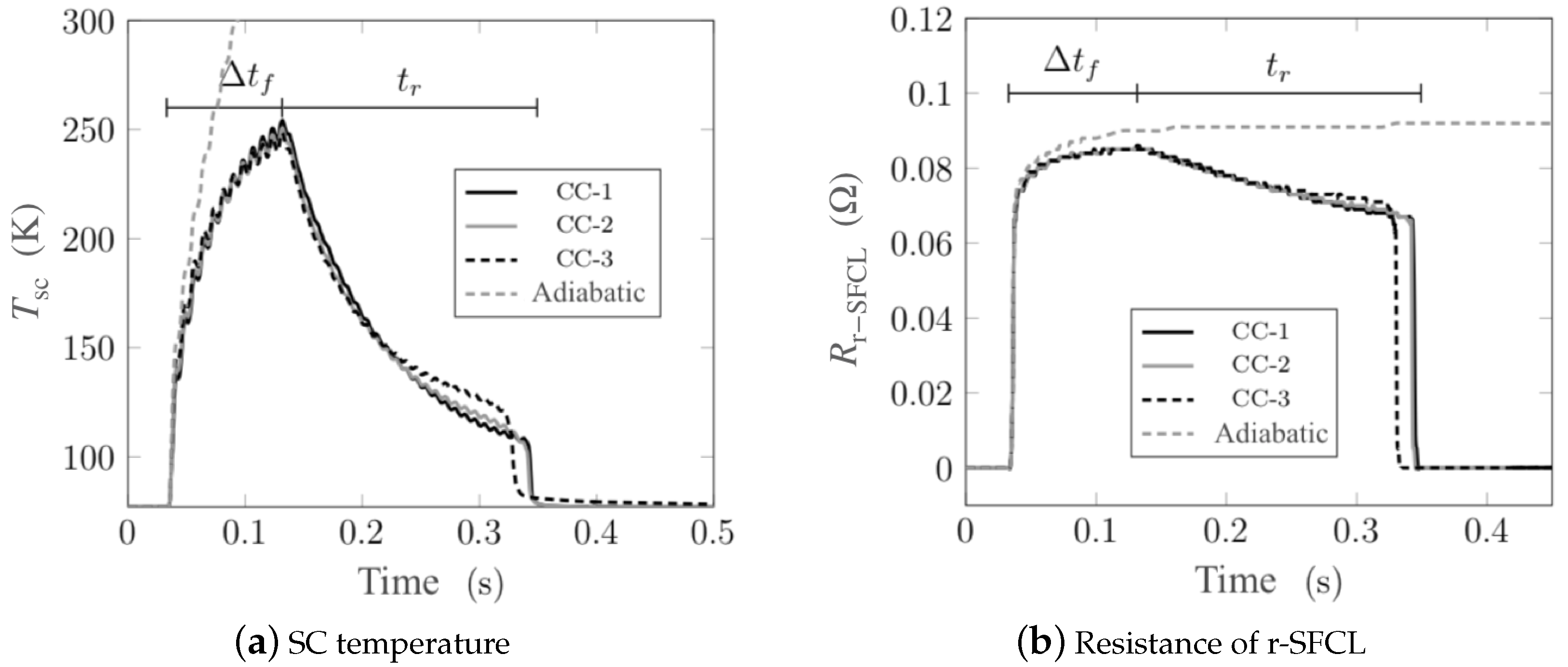
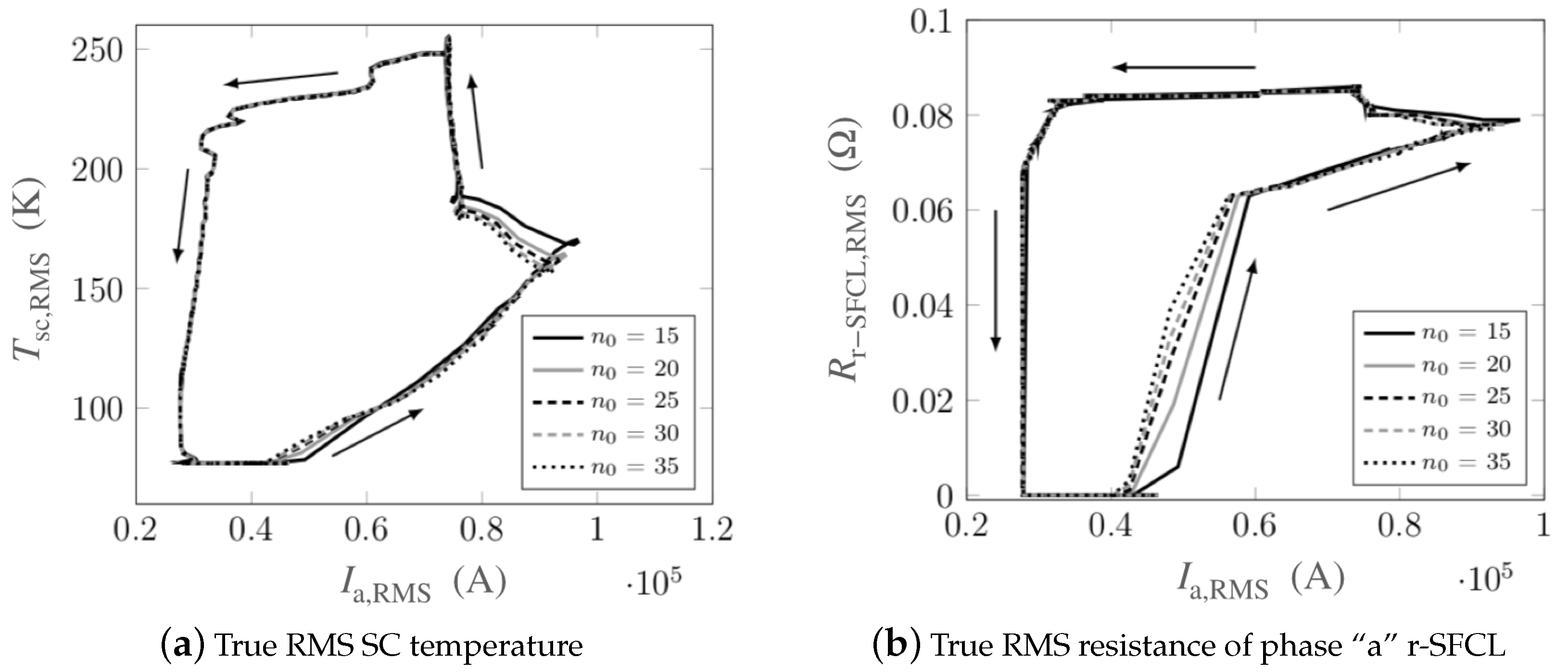
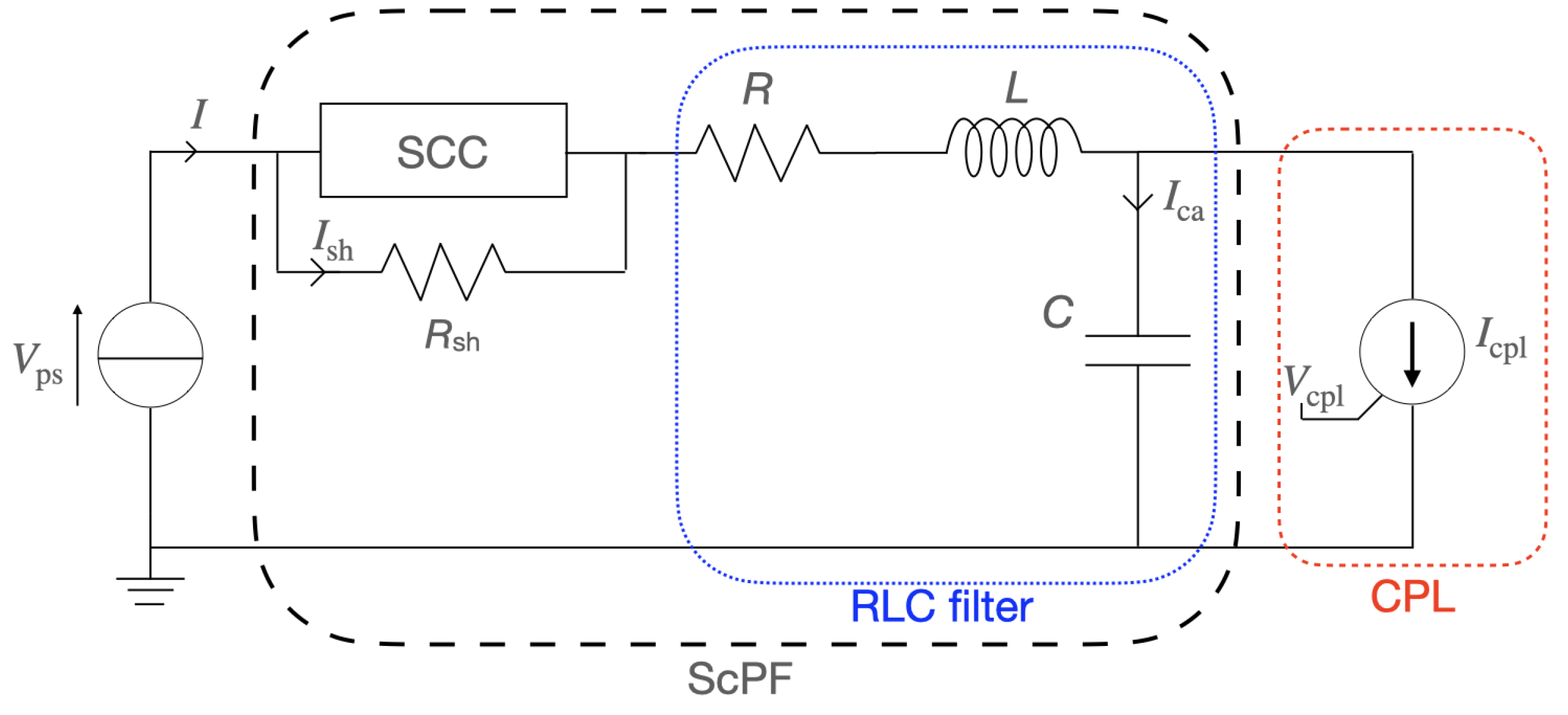
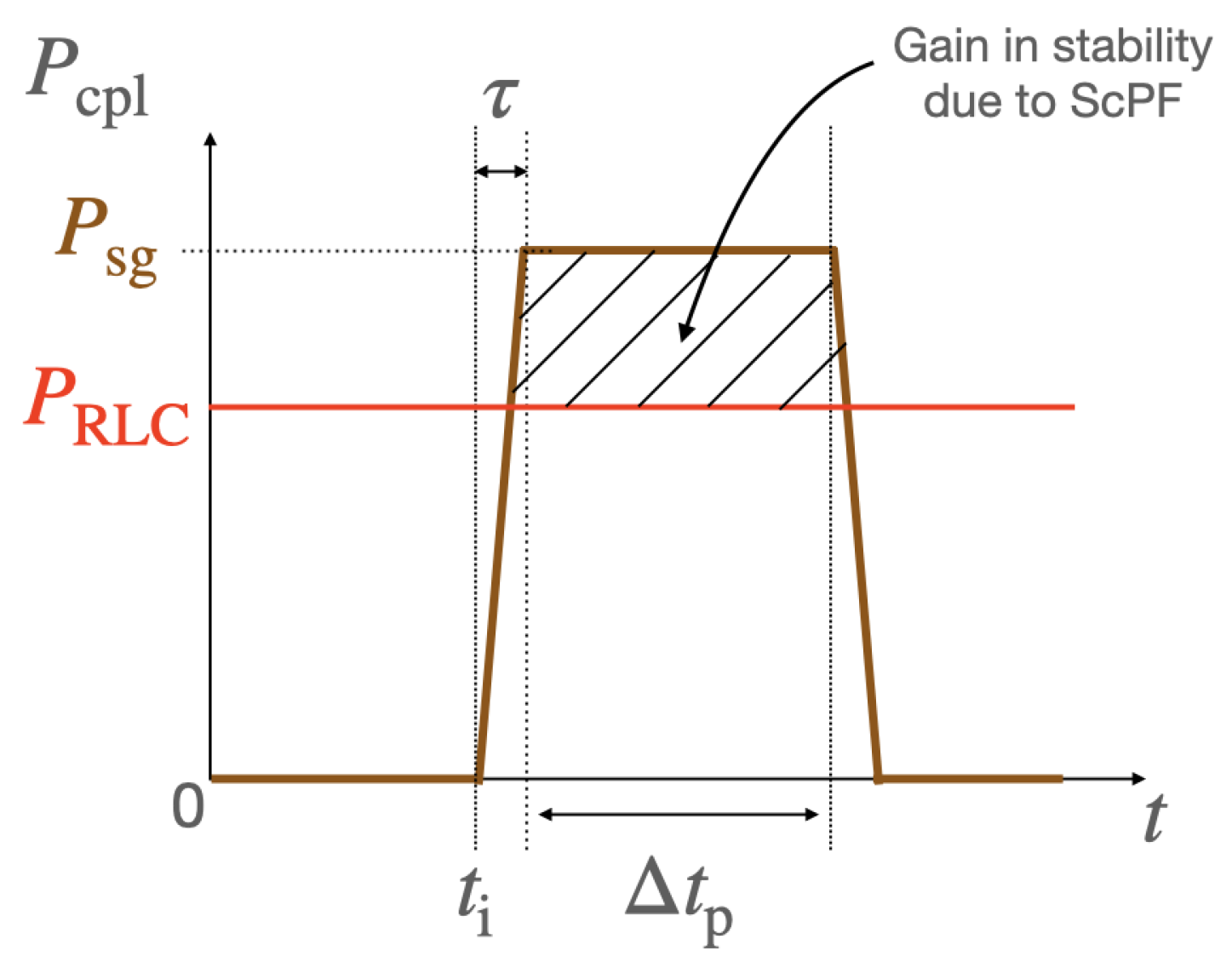
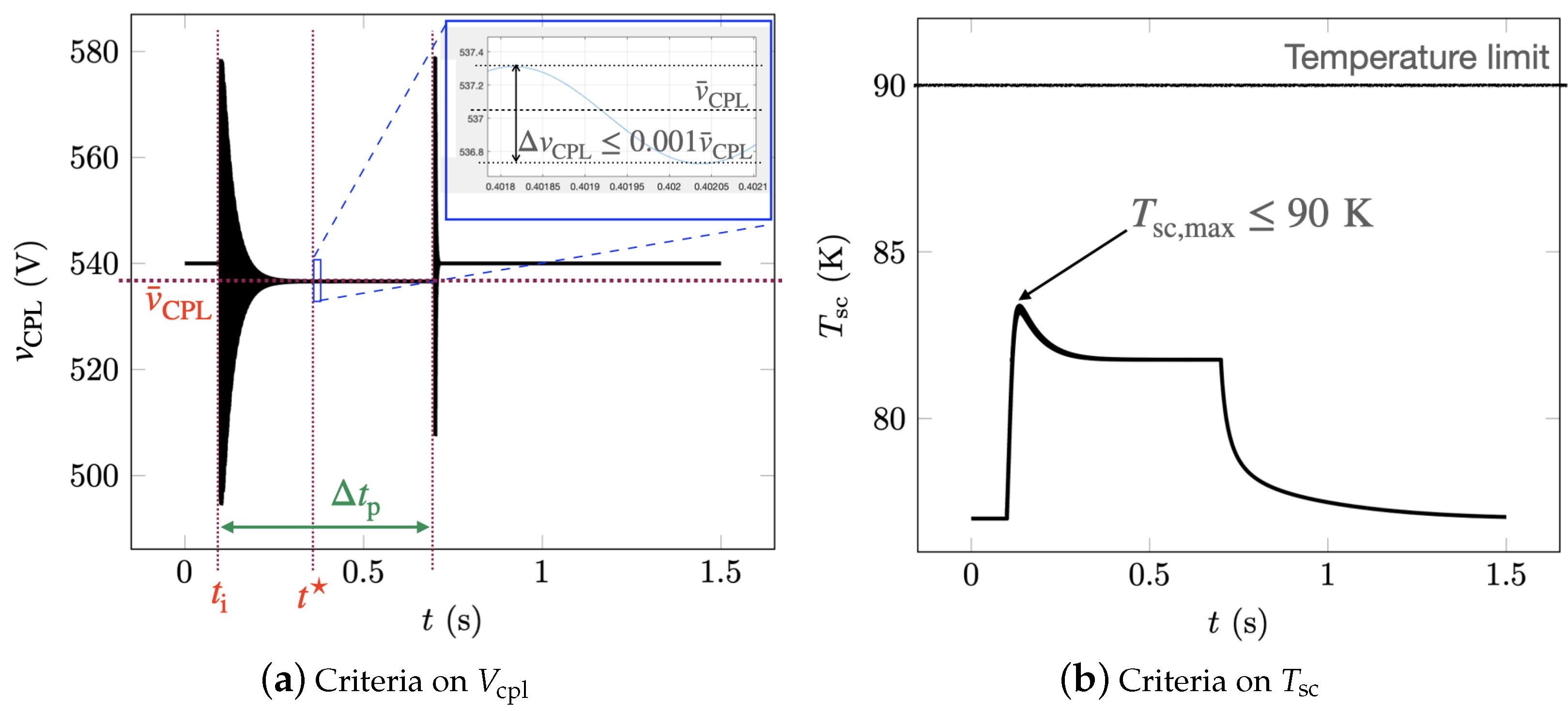


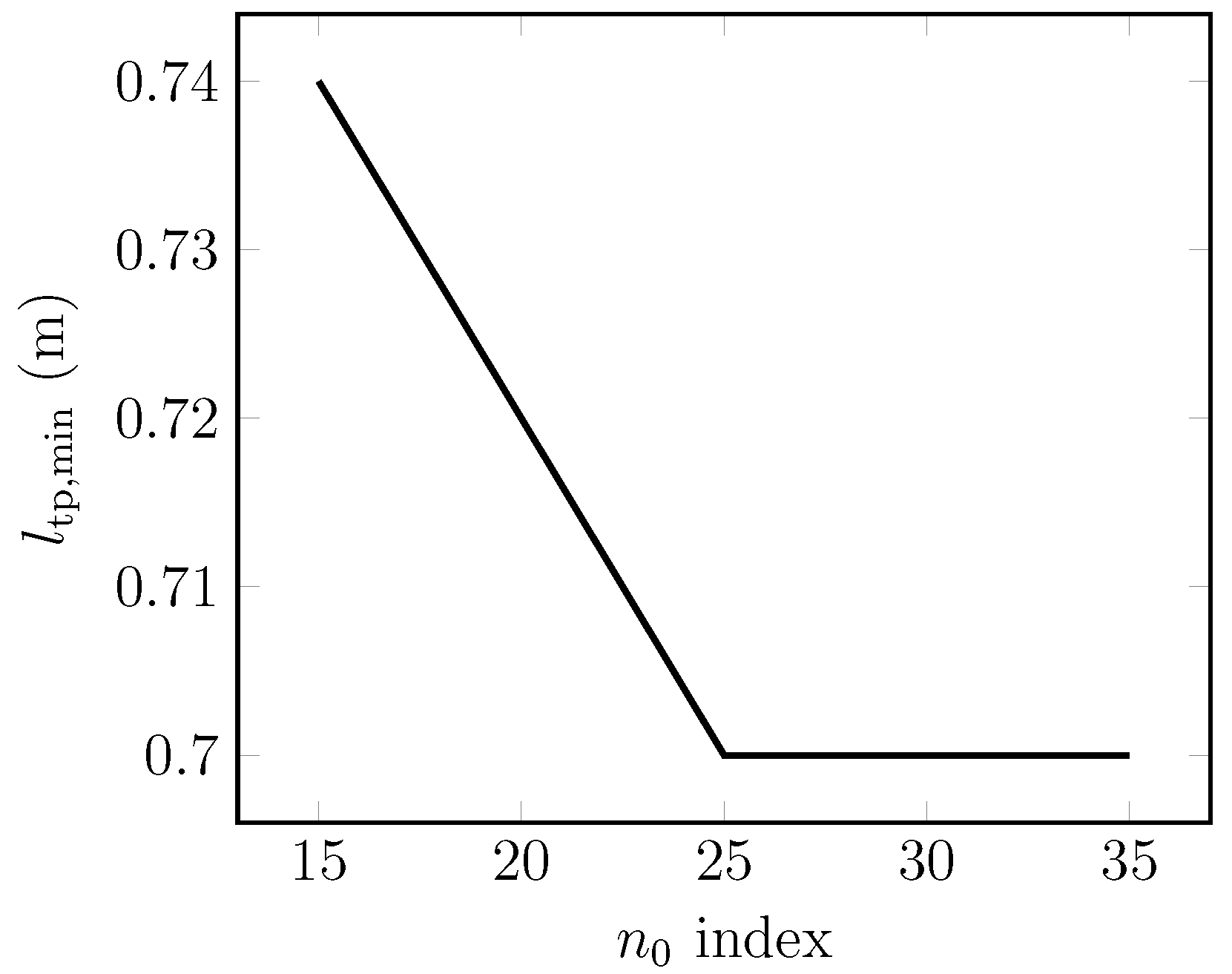


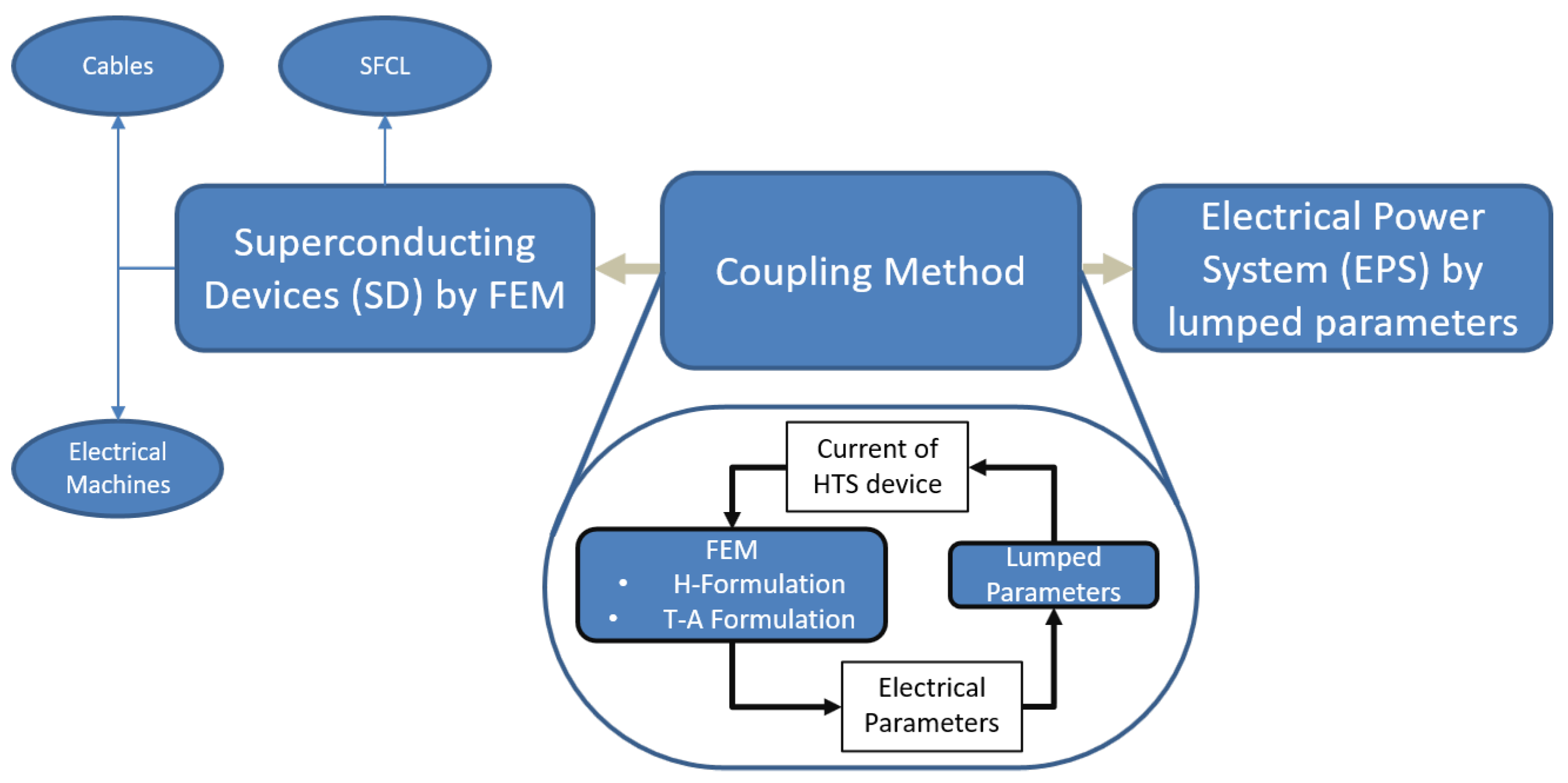
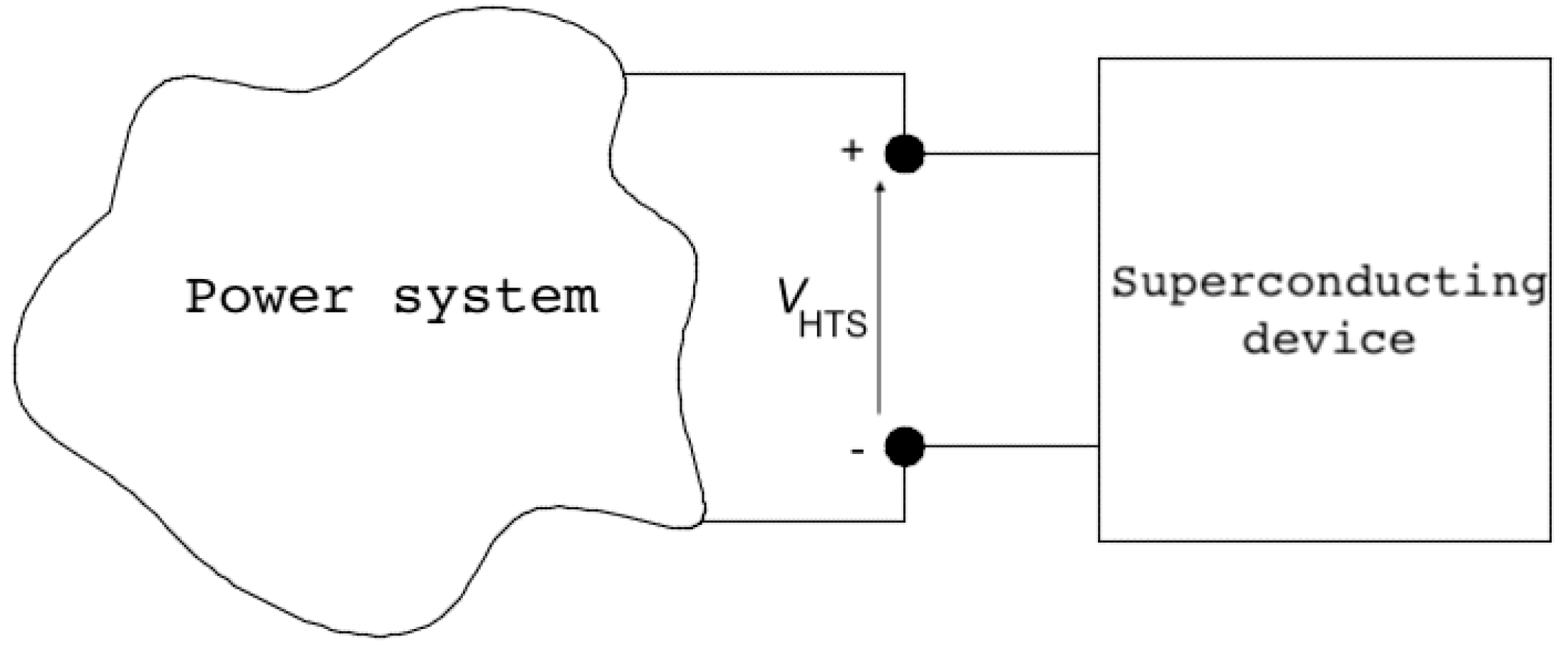

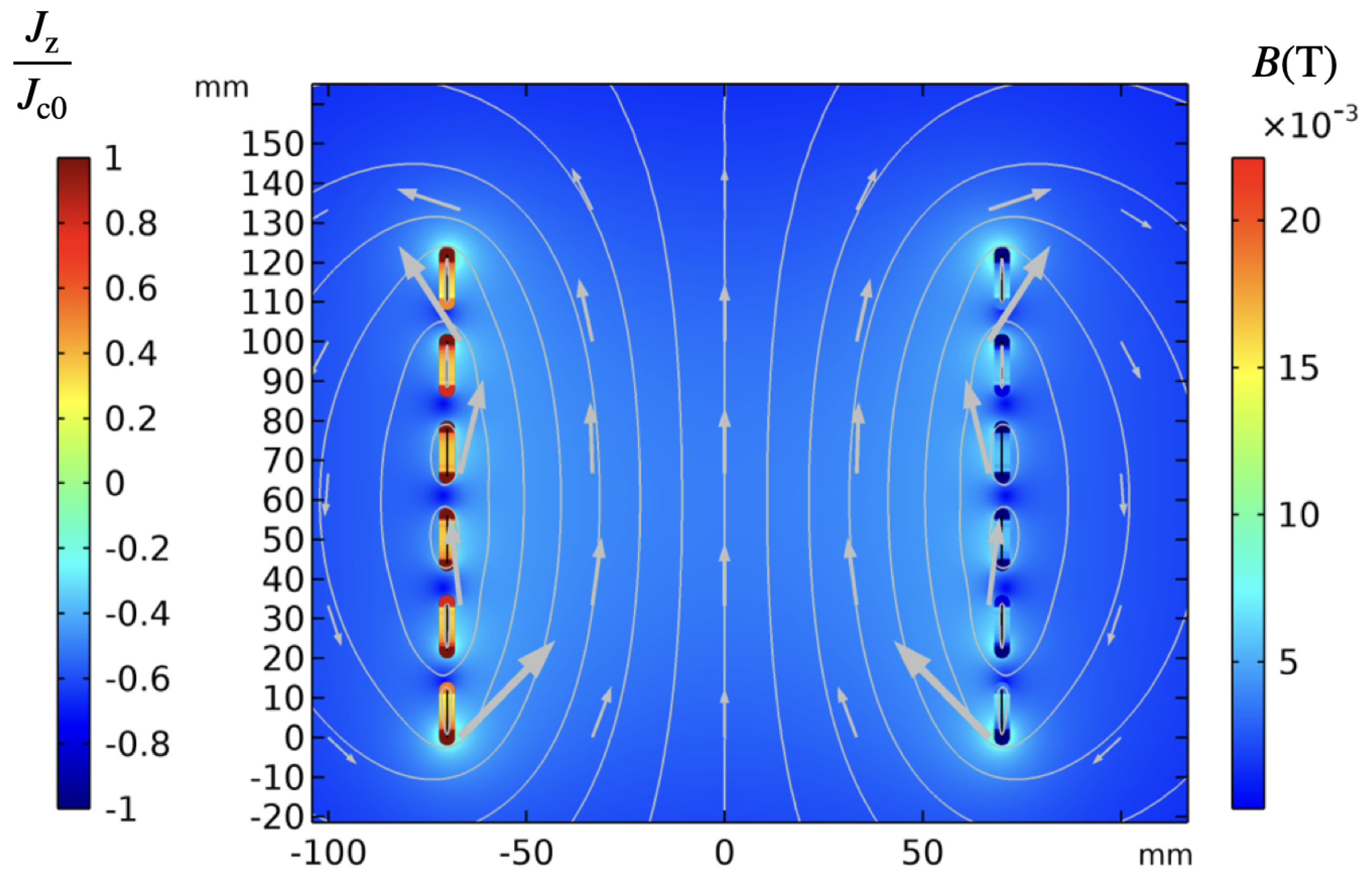
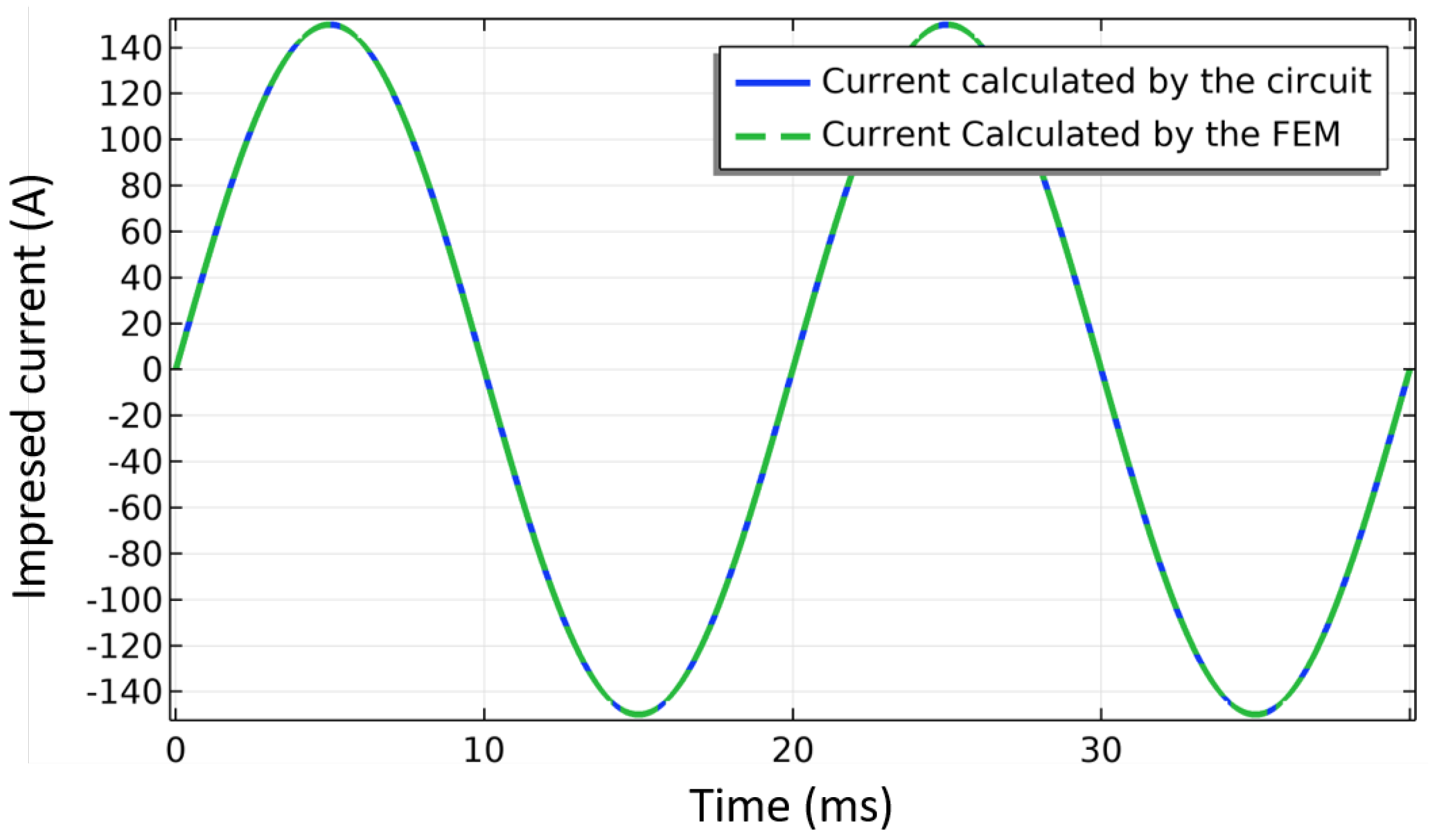



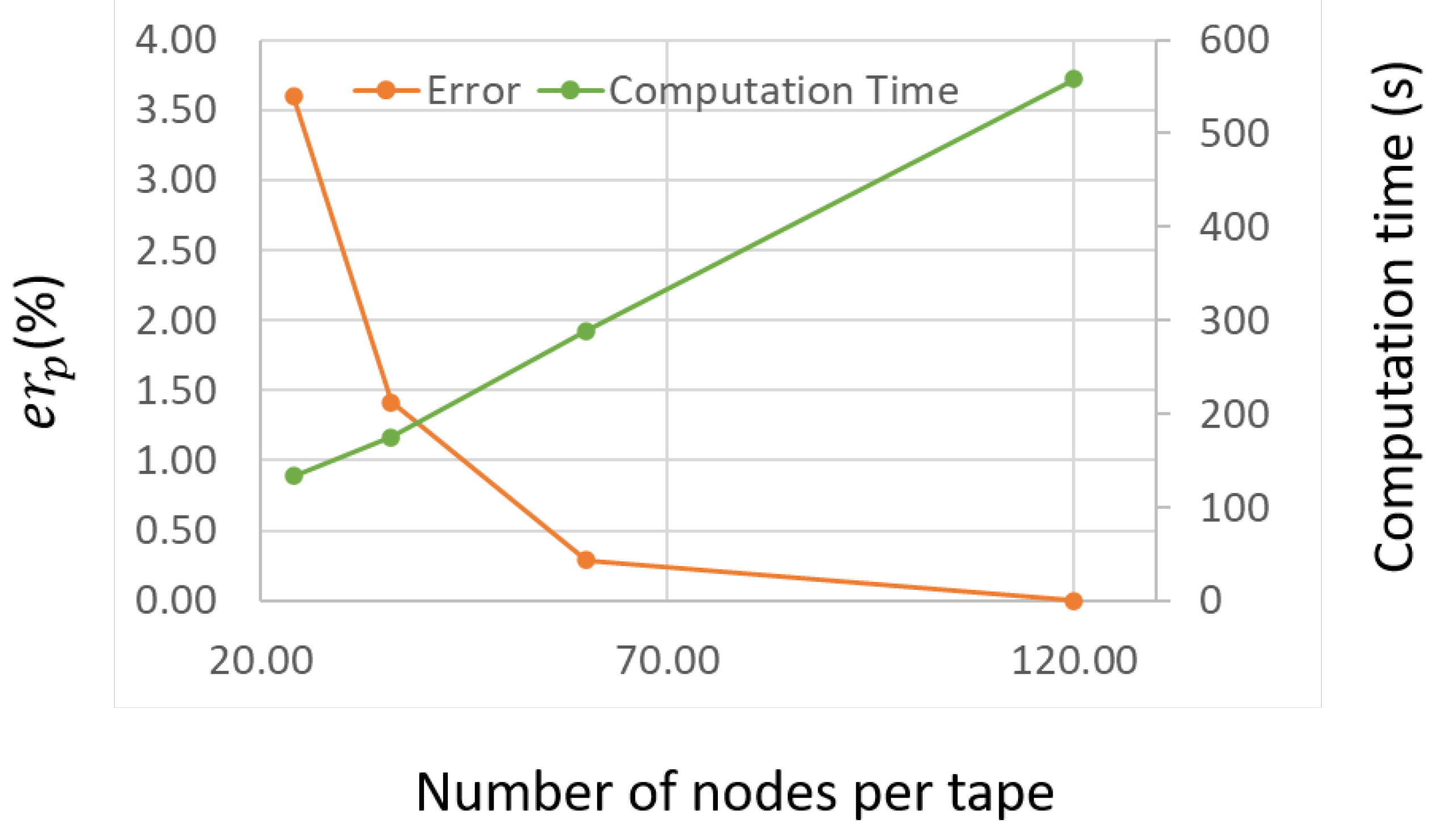


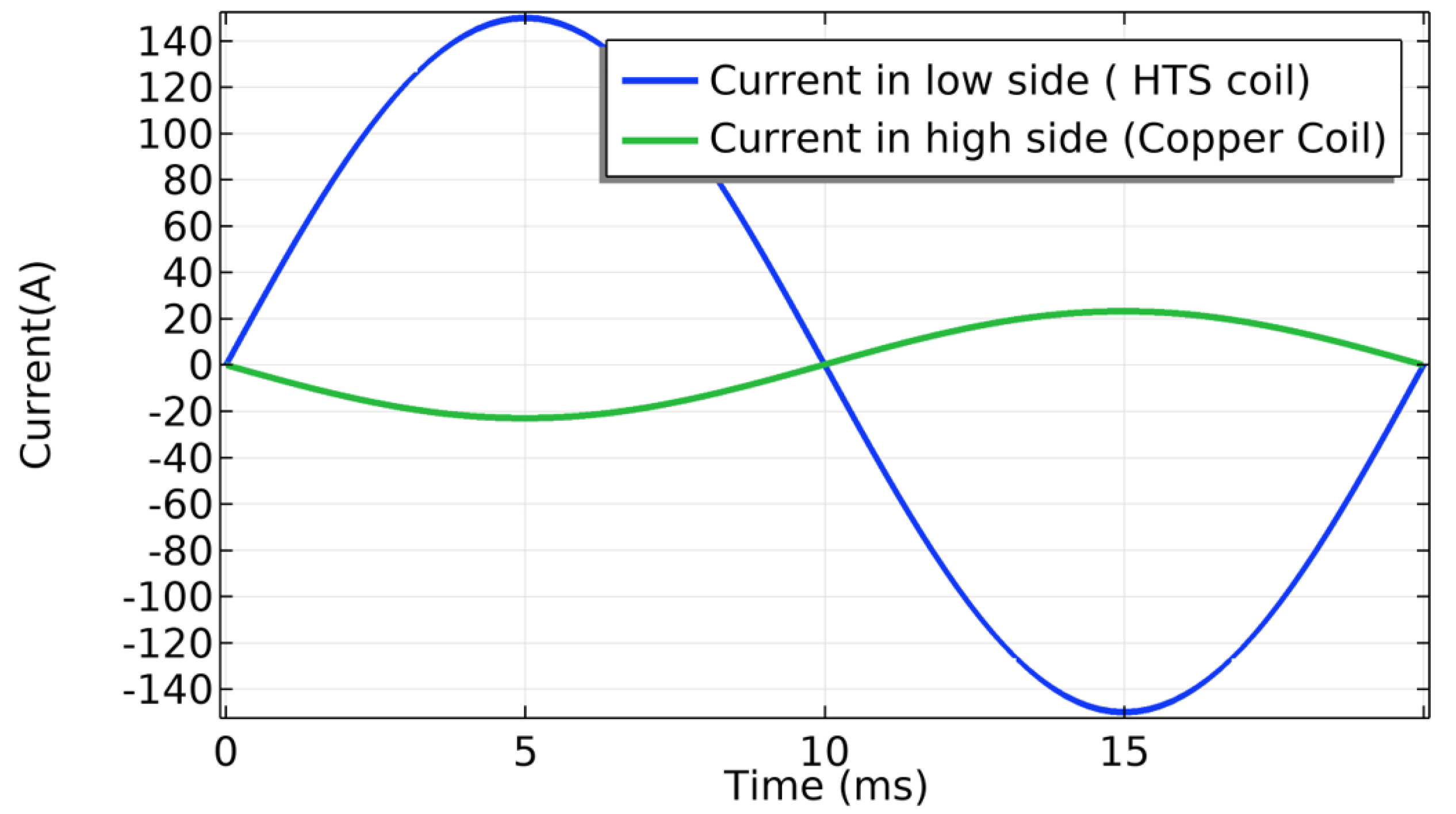
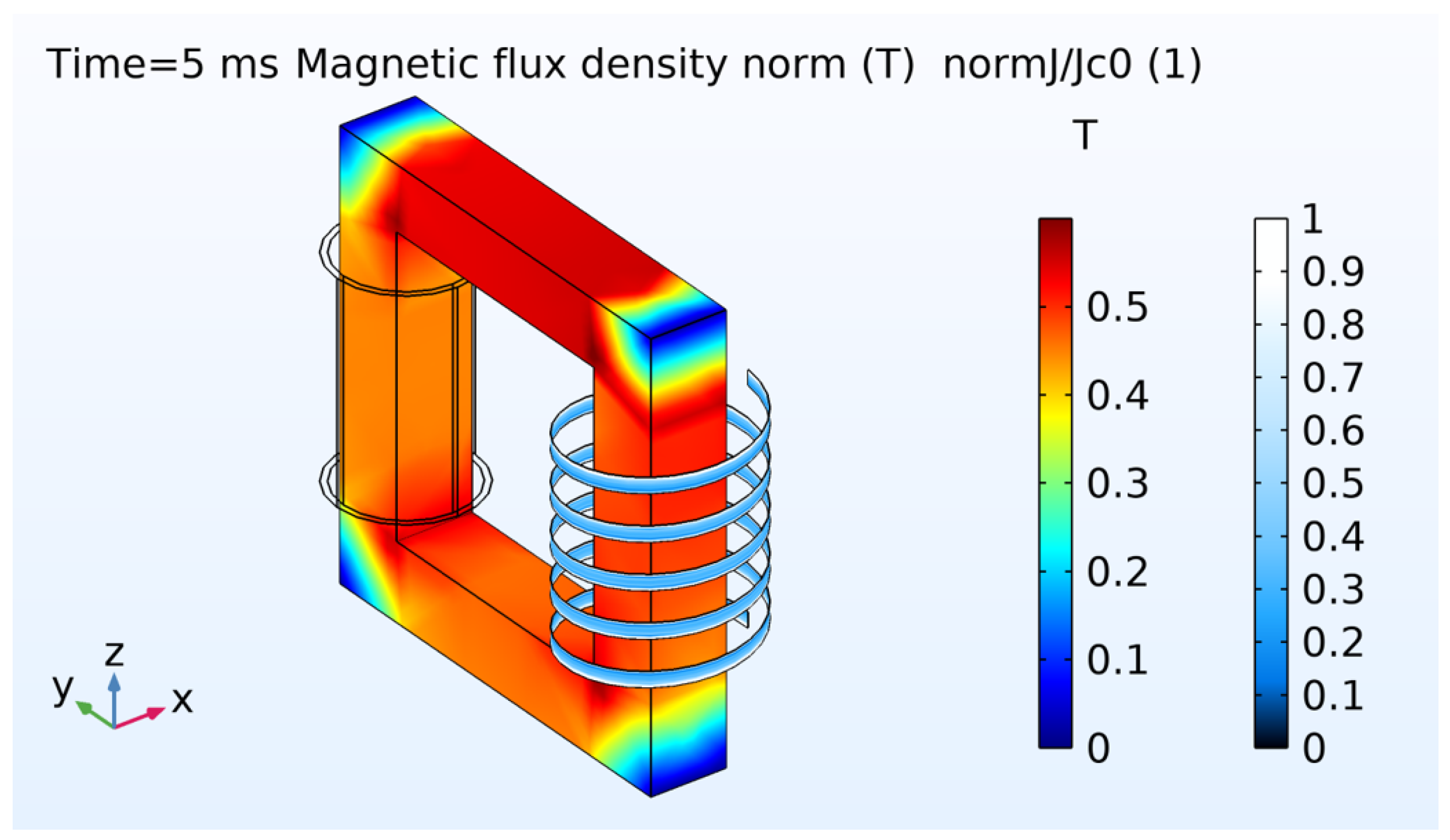
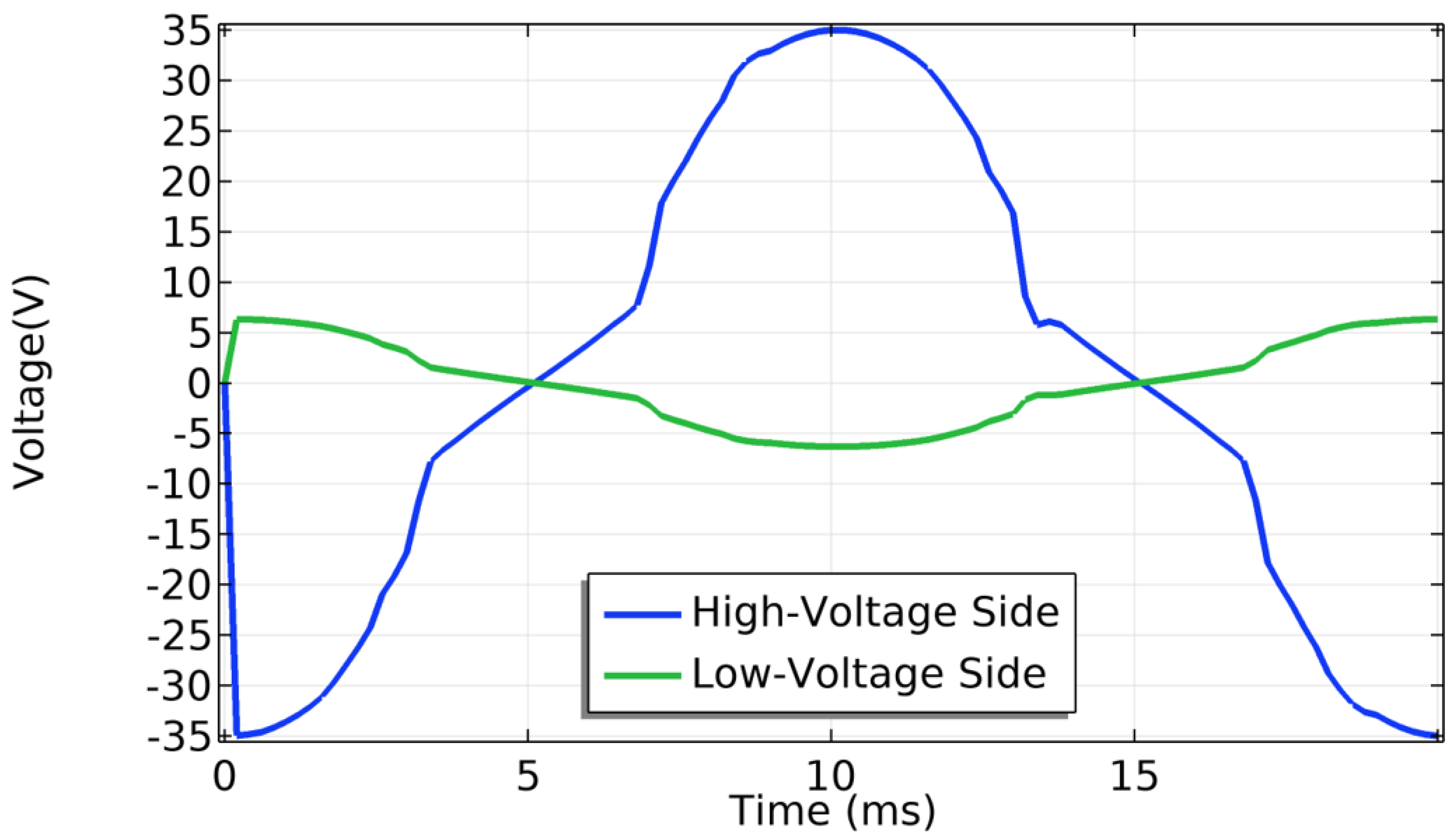
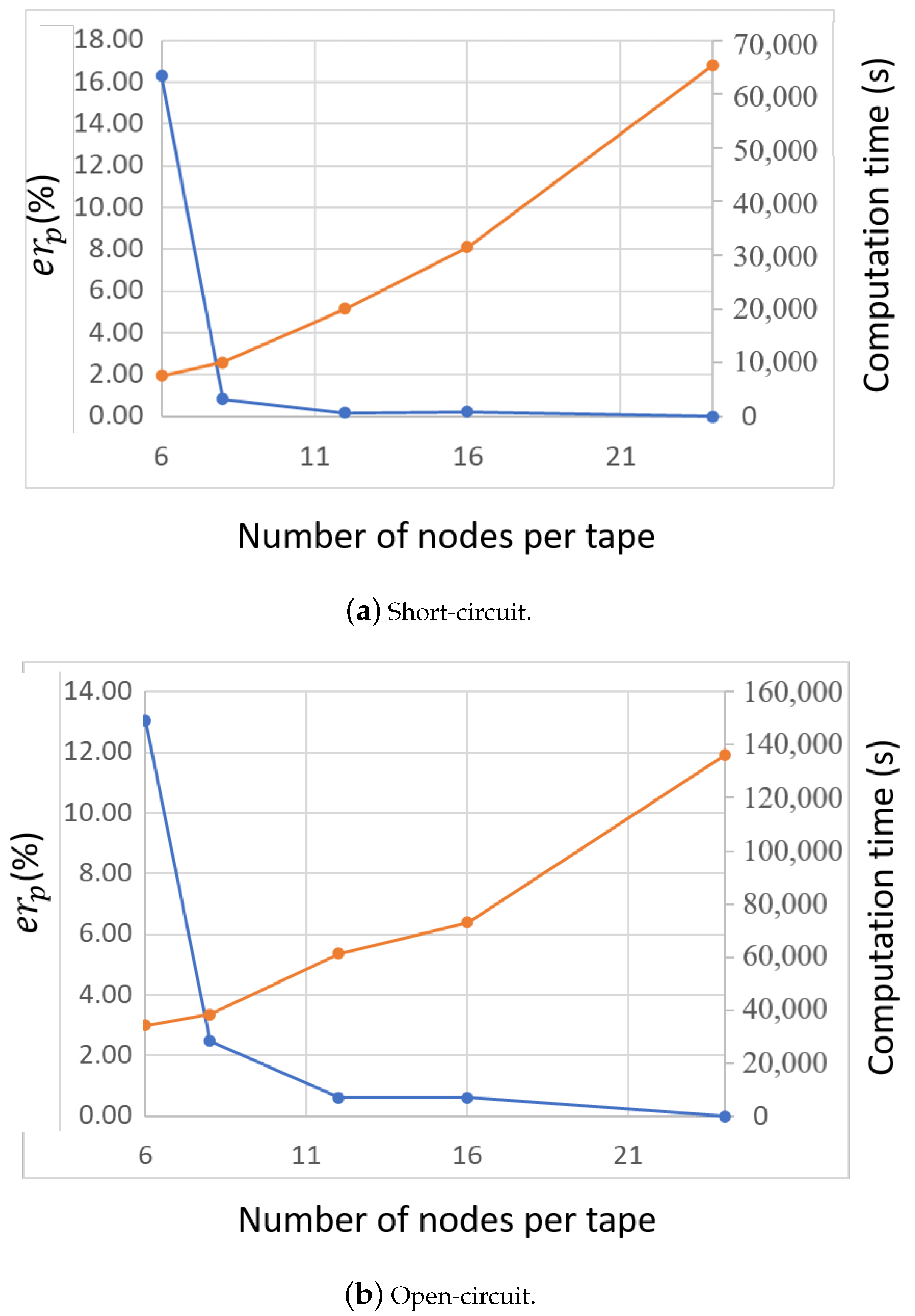
| Parameter | SuperPower Inc. | SUNAM Ltd. | SuperOx | AMSC |
|---|---|---|---|---|
| Technology | IBASD/MOCVD | IBAD/RCE | IBAD/PLD | RABiTS/MOD |
| Substrate | Hastelloy | Hastelloy | Hastelloy | NiW |
| Cu stabilizer | electroplated | electroplated | electroplated | laminated |
| REBCO thickness (μm) | 1.4 | 1.4 | 1.2 | 0.8 |
| Tape Width (mm) | SuperPower Inc. | SUNAM Ltd. | SuperOx | AMSC |
|---|---|---|---|---|
| 2 | 50 | - | - | - |
| 3 | 75 | - | - | - |
| 4 | 100 | 100 | 100 | 80 1 |
| 6 | 150 | - | 150 | - |
| 12 | 300 | 400 | 300 | 250 |
| Parameter | Value | Unit |
|---|---|---|
| Synchronous generator | ||
| RMS line-to-line machine voltage | 13.8 | kV |
| Inertial constant, H | 3.7 | s |
| Number of pairs of poles, p | 32 | - |
| Stator resistance | 0.0029 | p.u. |
| Reactances along the d axis, , , | 1.31, 0.3, 0.25 | p.u. |
| Reactances along the q axis, , , | 0.47, 0.24, 0.18 | p.u. |
| Time constants, , , | 1.01, 0.05, 0.1 | s |
| r-ScFCL | ||
| Stabilizer free tape (SuperPower Inc., Glenville, NY, USA) | SF12100 | - |
| Tape width | 12 | mm |
| Critical current (at 77 K, Self-Field) | 300 | A |
| Operating temperature | 77 | K |
| Number of parallel tapes | 225 | - |
| Total length of the tape | 607.5 | m |
| Shunt resistance, | 0.103 | |
| Delta-wye transformer | ||
| RMS voltage (low side/high side) | 13.8/500 | kV |
| Low side impedance | 0.002 | p.u. |
| High side impedance | 0.002+j0.12 | p.u. |
| Impedance of magnetization | 500+j500 | p.u. |
| Line transmission | ||
| Positive zero-sequence resistance | 0.05, 0.605 | p.u. |
| Positive zero-sequence inductance | 0.923, 3.399 | p.u. |
| Positive zero-sequence capacitance | 1.139, 1.826 | p.u. |
| Parameter | Value | Unit |
|---|---|---|
| RLC filter | ||
| Resistance of the RLC filter, R | 0.001 | |
| Inductance of the RLC filter, L | 10 | μH |
| Baseline power limit stability, | 144 | kW |
| SCC | ||
| Cu-stabilized tape (SuperPower Inc., Glenville, NY, USA) | SCS3050 | - |
| Tape width | 3 | mm |
| Critical current (at 77 K, Self-Field) | 75 | A |
| Operating temperature | 77 | K |
| Shunt resistor, | 0.01 |
| CC-1 | CC-2 | CC-3 | |
|---|---|---|---|
| (m) | 0.72 | 1.75 | - |
| Parameter | Value | Unit |
|---|---|---|
| Coil Diameter, | 140 | mm |
| superconducting tape width, w | 12 | mm |
| Distance between turns, | 10 | mm |
Publisher’s Note: MDPI stays neutral with regard to jurisdictional claims in published maps and institutional affiliations. |
© 2021 by the authors. Licensee MDPI, Basel, Switzerland. This article is an open access article distributed under the terms and conditions of the Creative Commons Attribution (CC BY) license (https://creativecommons.org/licenses/by/4.0/).
Share and Cite
Trillaud, F.; dos Santos, G.; Gonçalves Sotelo, G. Essential Material Knowledge and Recent Model Developments for REBCO-Coated Conductors in Electric Power Systems. Materials 2021, 14, 1892. https://doi.org/10.3390/ma14081892
Trillaud F, dos Santos G, Gonçalves Sotelo G. Essential Material Knowledge and Recent Model Developments for REBCO-Coated Conductors in Electric Power Systems. Materials. 2021; 14(8):1892. https://doi.org/10.3390/ma14081892
Chicago/Turabian StyleTrillaud, Frederic, Gabriel dos Santos, and Guilherme Gonçalves Sotelo. 2021. "Essential Material Knowledge and Recent Model Developments for REBCO-Coated Conductors in Electric Power Systems" Materials 14, no. 8: 1892. https://doi.org/10.3390/ma14081892
APA StyleTrillaud, F., dos Santos, G., & Gonçalves Sotelo, G. (2021). Essential Material Knowledge and Recent Model Developments for REBCO-Coated Conductors in Electric Power Systems. Materials, 14(8), 1892. https://doi.org/10.3390/ma14081892








